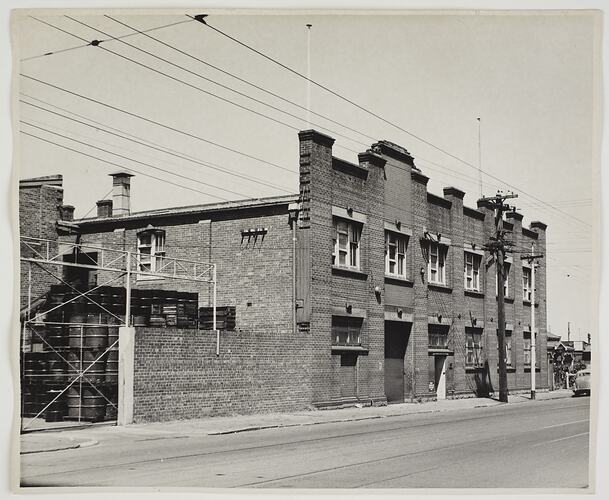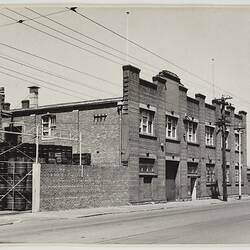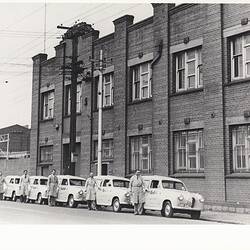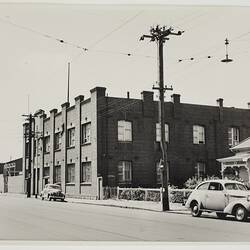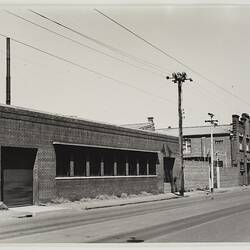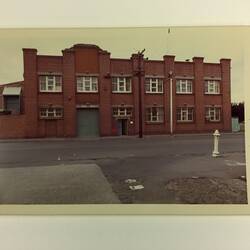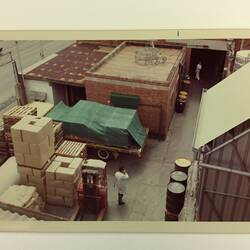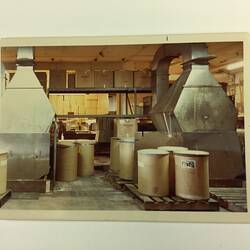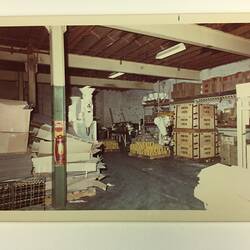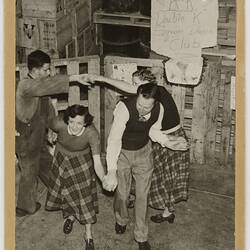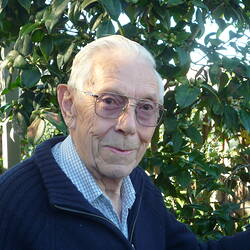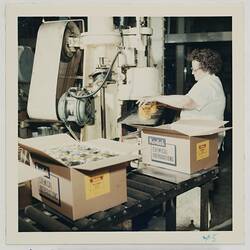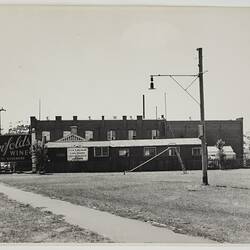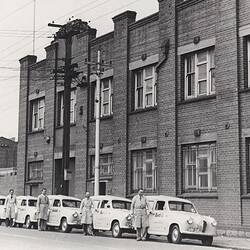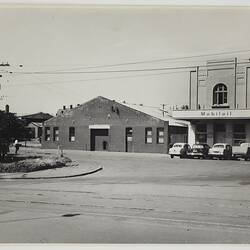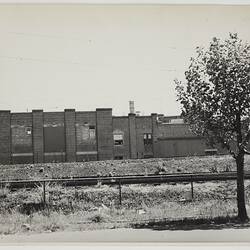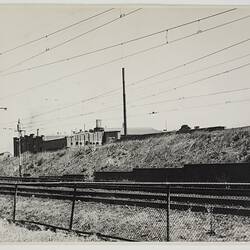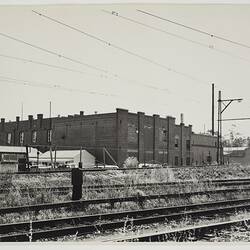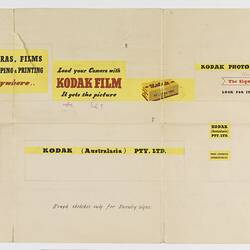Kodak Australasia's Photo Finishing and Photo Chemical Facility at Burnley, 1950-1974
In 1950, Kodak Australasia Pty Ltd bought a new factory building at 550-556 Swan Street in Burnley to house their Black and White Photo-Finishing Laboratory (Developing and Processing Department), as well as their Powder and Solution Department (later known as the Photochemical Department).
The new building was necessary because Kodak's original Abbotsford factory had run out of space and was too cramped for the business to expand. Former Black and White Laboratory staff member John Garrett noted that the company wanted to introduce a same day processing service so as to compete with other processing laboratories, which required an extension of the processing facilities.
The large brick building in Swan Street was well equipped for a growing manufacturing business, as for many years prior it had been the Barnes Honey factory. The site had a delivery entrance and yard, and with its multi-story building it could accommodate a large number of staff for its manufacturing, processing, packaging, storage and distribution operations.
The building was also well served by public transport for staff to travel to work. It had a tramline out the front which could bring workers right to the door, and a train line ran behind it with Burnley train station nearby. Swan Street was also a major road link and convenient for those staff who drove there and for company deliveries.
Photo chemicals were manufactured, mixed and packaged in the Powder and Solution Department on the ground floor, while Black and White Photo Finishing was on the first floor. The basement was used for the re-circulation of developer and other chemical solutions for the developing and printing process. Pumps in outbuildings and in the basement helped to move solutions through the system.
John Garrett recalls he was told at the time that "We've bought (the honey factory) and it's all been reprocessed and all fashioned up, all flash now." However, Noel Monteith, who was in charge of insurance at Kodak during this period, recalled that Burnley had wonky wooden floors which were "bad, very bad indeed" and he considered them a great fire risk. He thought that the Kodak plumbers had to install a fire sprinkler system there to protect the building. Photographs and motion film footage of the period show the facility to be quite basic with highly manual work equipment installed and the space crowded full of stored materials and product.
Once operating, the building had its own maintenance workshop and the staff included George Rutherford, Jimmy McCourt and Andy Anderson.
The ground floor window at far right is where the first aid room was. The window to the left of this was the manager's office. The window to the left of that was the secretary's office and the main entrance was to the left of that. At far left was the entrance to the factory yard and to the left of that was the quality control laboratory.
Despite its challenges, Kodak operated out of these premises for over twenty years, until 1974. The Powder and Solution Department was transferred to the Coburg factory at this time, taking up residence in Building 16 as the Photochemical Department, while the Black & White Photo Finishing Laboratory closed down permanently because a black and white processing and developing service was no longer seen as viable for the Kodak business.
References
Marie De Camara, nee McKinley Interview, HT 43000
John Garrett Interview 2014, HT 37042
Noel Monteith Interview 2014, HT 37135
More Information
-
Keywords
-
Authors
-
Article types
